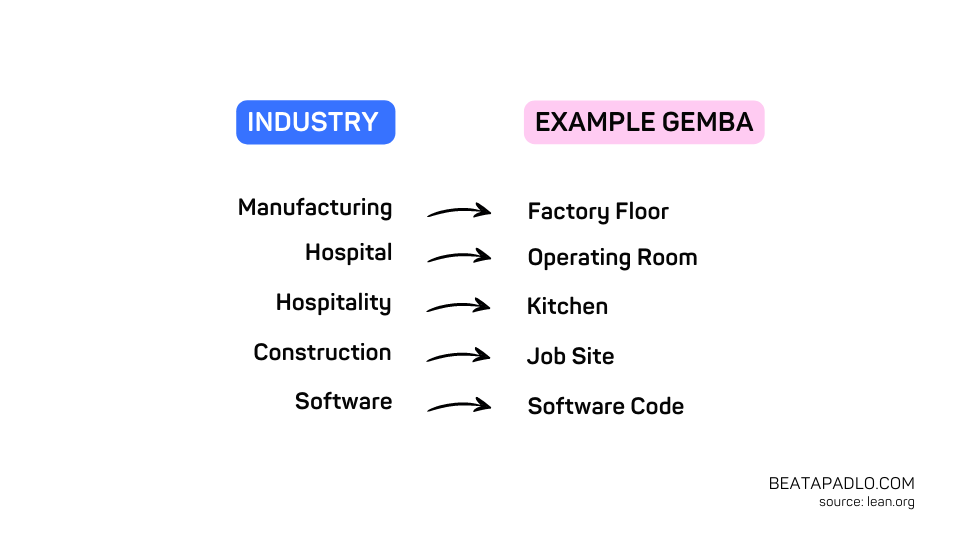You hear them being dropped here and there at work, wondering: “what did I just hear?” Unable to repeat, you sit in silence and wait for the workshop or a meeting to end to dive into Google and understand at least one of those words so next time you are not caught by surprise (or Sapuraizu in Japanese).
What is it with Japanese words for non-Japanese people (speaking for myself, if you are Japanese, you are awesome for reading this)? How did the Japanese language and culture manage to get the essence of it all? I’m sure there is not one answer to it. In this series of eight articles, I will attempt to unravel some of my favourite Japanese words and share with you how you and your team can benefit from learning about them.
Gemba, is that another word for mouth?
”“When you are out observing on the gemba, do something to help them.
Taiichi Ohno
if you do, people will come to expect that you can help them and will look forward to seeing you again on the gemba.”

To translate what Taiichi means, it is the actual place where you do the work, where the value gets created. This method takes management to where the work is being done and sends them on a hunt for improvements. To say that is a walk, it is not a random walk with a cup of coffee when the manager is staring from behind at what you are doing, commenting on your screen or use of social media at work. It is a planned and scheduled technique.
Other ideas to use Gemba in your team:
- Put up a Kanban Board to see the work that is being done. In the following article, word five, I’m sharing more on Kanban.
- Make a field trip with your team to the production line (if you work in manufacturing)
- Schedule user interviews and find out what brings the most value. This works best if you have a UX designer on your team, in which case, could you ask to assist them in the next user session? If you don’t work with anyone experienced in UX, ask your users or customers directly what brings value and start collecting data.
Here is how you can plan for one with your team:
- You can start by defining the purpose of your Genba Walk. Why would you “walk” in the first place? How will you plan a digital walk (aka remote walk)?
- Be open with your teams, and share the purpose ahead of the walk so that they can participate actively. Make them part of such a walk, sometimes you walk, and other times team members do. Don’t make it “manager’s job”.
- Aim to focus on the process, not the people. You’ll be able to observe the work. Critique does not take space here.
- Gather information in a digital format, make notes, and take photos/videos. This is not the stage for analyses and conclusions yet.
- Include your teams when sharing findings, ideas or recommendations for future changes.
To read more about Gemba walks, you can read a book by a surprising title: Gemba Walks, where Jim Womack shares all about his walks and more.
NOTE BELOW:
*This term seems to be translated to Gemba and Genba. Both uses seem to be meaning the same thing.
** Gęba (pronounced gemba) does mean mouth, not in Japanese but in Polish. It’s a less polite way to describe mouth. 😉
To continue learning with me Japanese “words” used in Lean, Agile or our everyday lives. Learn how you can apply them to your team and organisation. I hope you will jump to the following article to read my take on Kaizen.



